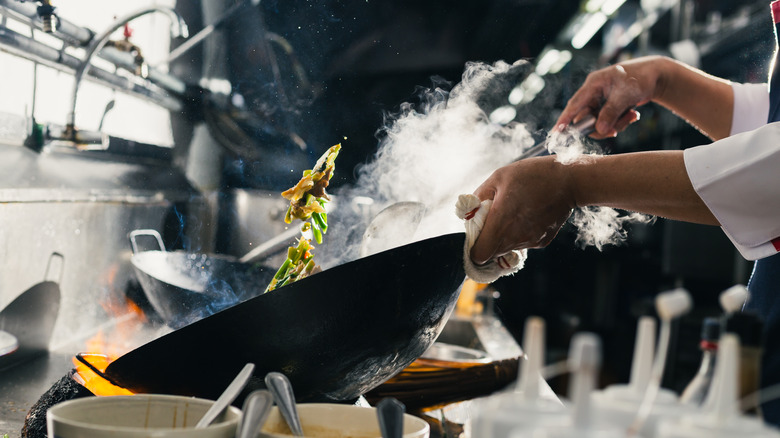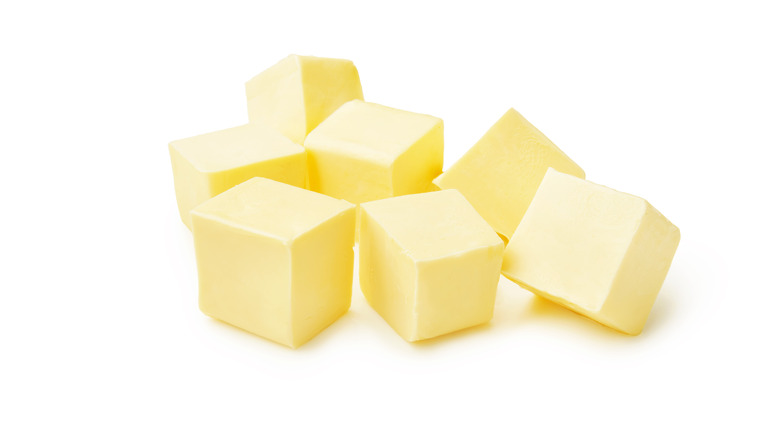Which Cooking Fat Has The Lowest Smoke Point?
Cooking and fat go hand-in-hand. If you've ever tried to sauté chicken in a dry pan, it's pretty obvious why. No fat means a sticky mess and a missed opportunity for added flavor.
Merriam-Webster defines a fat's smoke point as "the temperature at which an oil or fat (especially used for cooking) begins to emit smoke." Pretty straightforward, yet it's definitely something you want to avoid. Once a fat begins to smoke, your dish is toast. Why? Well, according to MasterClass, it's a sign that your oil is starting to degrade. When oil begins to deteriorate, it not only gives off a bitter bite to the palate but also releases free radicals that can be dangerous to your health.
The oil with the highest smoke point is refined avocado oil, so knock yourself out and fry away with the liquid green gold. But which cooking fat has the lowest smoke point and should be saved for low-heat methods of making your meal?
You have to believe it's butter
Yep, that's right. Butter is the cooking fat with the lowest smoke point, coming in at approximately 302 to 350 F on the index. It's best saved for low-heat cooking like a quick sauté, baking, or a low and slow roast. A fat's smoke point comes down to the level, or saturation, of its fatty acids. Overall, saturated fatty acids are jam-packed together, making them fit for high heat. In other words, they are stable and can tolerate higher temperatures before they begin to smoke (via The Health Sciences Academy).
A twist to this is clarified butter, also commonly known as ghee. According to Spoon University, once the water and milk solids are removed, as is done with ghee, butter's smoke point skyrockets. It is the milk solids in butter that lower the smoke point. While many dishes call for brown butter, there is a fine line between browned and burnt — and it can be crossed quickly. The milk solids have burned when you see the brown specks turn black, and it's time to toss it and start over, per Seasoned Cooks.

